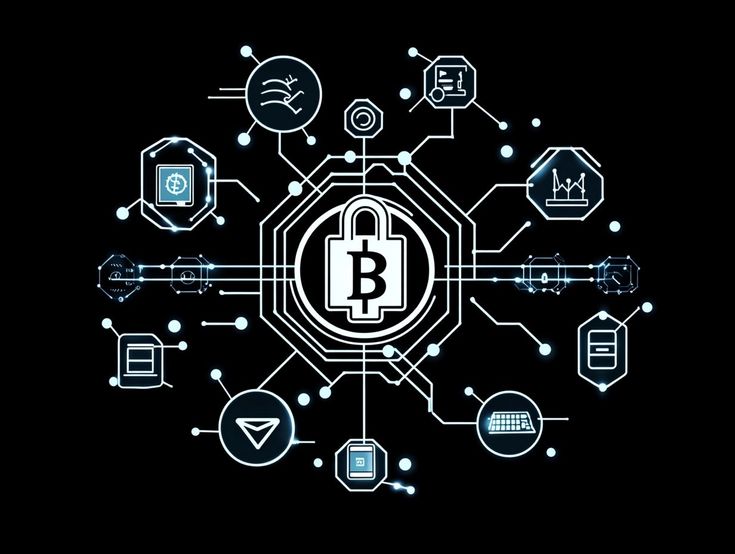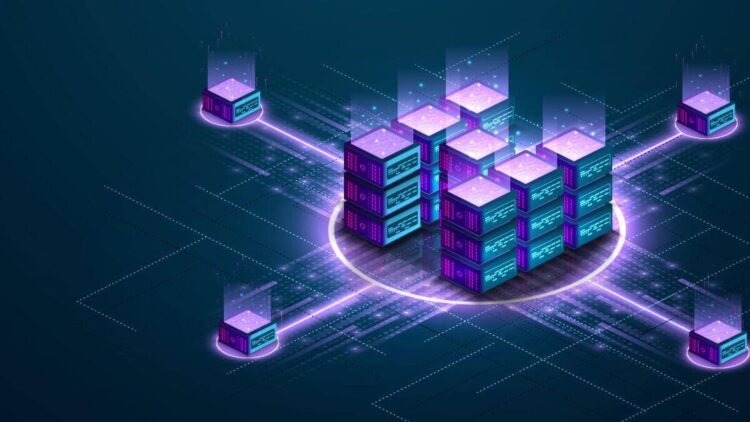The landscape of academic credential verification is undergoing a revolutionary transformation through blockchain technology. Traditional methods of verifying educational achievements have long been plagued by inefficiencies, fraud, and time-consuming processes that burden both institutions and employers.
However, blockchain-based credential systems are emerging as a game-changing solution that promises to reshape how we authenticate and verify academic accomplishments in the digital age.
Understanding the Current Academic Verification Crisis
Educational credential fraud has reached alarming proportions globally, with millions of fake diplomas and certificates circulating in the job market. The traditional paper-based system of academic verification presents numerous vulnerabilities that malicious actors exploit regularly.
Employers often spend weeks or even months attempting to verify the authenticity of candidates’ educational backgrounds, leading to delayed hiring processes and increased administrative costs.
The conventional verification process typically involves multiple stakeholders, including educational institutions, verification agencies, and employers. This complex web of intermediaries creates opportunities for document forgery, data manipulation, and human error.
Furthermore, the centralized nature of traditional systems makes them susceptible to data breaches and institutional failures that can compromise entire databases of student records.
International students and professionals face additional challenges when seeking employment or further education abroad. Different countries have varying standards and recognition systems for educational credentials, making cross-border verification particularly complex and time-consuming.
These inefficiencies not only impact individual career prospects but also hinder global talent mobility and economic growth.
Revolutionary Blockchain Technology in Education
Blockchain technology offers a paradigm shift from traditional centralized verification systems to a distributed, immutable ledger that ensures transparency and security.
By leveraging cryptographic principles and consensus mechanisms, blockchain creates an unalterable record of educational achievements that can be verified instantly without relying on intermediaries.
The decentralized nature of blockchain eliminates single points of failure that plague traditional systems. When academic credentials are recorded on a blockchain network, they become part of a permanent, tamper-proof digital ledger that multiple nodes verify and maintain.
This distributed architecture ensures that even if individual institutions face technical difficulties or cease operations, the credential records remain accessible and verifiable.
Smart contracts, programmable agreements that execute automatically when predetermined conditions are met, further enhance the blockchain credential system.
These self-executing contracts can automate various aspects of credential issuance, verification, and management, reducing administrative overhead while ensuring compliance with institutional policies and regulatory requirements.
Comprehensive Benefits of Blockchain Credentials
A. Enhanced Security and Fraud Prevention
Blockchain credentials provide unprecedented security through cryptographic hashing and digital signatures. Each credential receives a unique cryptographic fingerprint that makes forgery virtually impossible.
The immutable nature of blockchain ensures that once a credential is recorded, it cannot be altered or deleted without detection, providing absolute protection against tampering.
B. Instant Global Verification
Traditional credential verification can take days or weeks to complete, especially for international documents. Blockchain credentials enable instant verification from anywhere in the world, as authorized parties can access the distributed ledger and confirm authenticity within seconds.
This rapid verification capability significantly accelerates hiring processes and educational admissions.
C. Reduced Administrative Costs
Educational institutions spend substantial resources on credential verification and issuance processes. Blockchain technology automates many of these functions through smart contracts, reducing administrative burden and operational costs.
The elimination of intermediaries and manual verification processes translates to significant savings for both institutions and employers.
D. Student Ownership and Control
Blockchain credentials empower students with complete ownership and control over their academic records. Unlike traditional transcripts held by institutions, blockchain credentials belong to the students themselves, who can share them selectively with potential employers or educational institutions without requiring institutional involvement.
E. Permanent Record Keeping
The immutable nature of blockchain ensures that academic credentials remain permanently accessible, even if issuing institutions merge, close, or face technical difficulties.
This permanence provides lifelong security for graduates and eliminates concerns about lost or inaccessible academic records.
F. Standardization and Interoperability
Blockchain credential systems can establish universal standards for academic verification, enabling seamless recognition across institutions and borders. This standardization facilitates international student mobility and professional recognition while reducing complexity in global education systems.
Implementation Challenges and Solutions
A. Technical Infrastructure Requirements
Implementing blockchain credential systems requires significant technical infrastructure and expertise. Educational institutions must invest in blockchain development, node maintenance, and security protocols.
However, cloud-based blockchain services and consortium approaches can reduce individual institutional burdens while maintaining system integrity.
B. Regulatory Compliance and Legal Recognition
The legal status of blockchain credentials varies across jurisdictions, creating uncertainty for institutions and employers. Governments and regulatory bodies must develop frameworks that recognize digital credentials while ensuring compliance with existing educational and employment laws.
Progressive jurisdictions are beginning to establish legal foundations for blockchain-based verification systems.
C. Adoption and Change Management
Transitioning from traditional paper-based systems to blockchain credentials requires comprehensive change management strategies. Institutions must train staff, educate stakeholders, and manage the cultural shift toward digital-first credential systems.
Gradual implementation approaches can help ease this transition while maintaining operational continuity.
D. Privacy and Data Protection
While blockchain provides transparency, educational credentials contain sensitive personal information that requires careful privacy protection. Advanced cryptographic techniques, such as zero-knowledge proofs and selective disclosure, enable verification without exposing unnecessary personal data. Compliance with data protection regulations like GDPR requires thoughtful implementation of privacy-preserving blockchain solutions.

Leading Blockchain Credential Platforms
A. MIT Digital Certificates
The Massachusetts Institute of Technology pioneered blockchain credential implementation by issuing digital certificates to graduates. Their system allows recipients to share verifiable credentials with employers while maintaining complete control over their academic records. The platform has successfully demonstrated the feasibility and benefits of blockchain-based academic verification.
B. IBM Digital Credentials
IBM’s blockchain credential platform provides enterprise-grade solutions for educational institutions and employers. The system offers comprehensive credential lifecycle management, from issuance to verification, while ensuring scalability and security. IBM’s platform has gained adoption across multiple universities and professional organizations worldwide.
C. Learning Machine Blockcerts
Blockcerts represents an open-source approach to blockchain credentials, enabling institutions to implement cost-effective verification systems.
The platform supports multiple blockchain networks and provides tools for credential design, issuance, and verification. Its open-source nature promotes widespread adoption and community-driven innovation.
D. Accredible Digital Badges
Accredible combines blockchain technology with digital badge systems to create comprehensive credential platforms. The solution supports micro-credentials, continuing education certificates, and traditional degrees while providing intuitive interfaces for both issuers and recipients. The platform emphasizes user experience and accessibility in blockchain credential management.
Future Prospects and Industry Evolution
The blockchain credential market is experiencing rapid growth as institutions recognize the technology’s transformative potential. Industry analysts project significant expansion in blockchain-based verification systems over the next decade, driven by increasing demand for fraud-resistant credentials and streamlined verification processes.
Artificial intelligence integration with blockchain credentials promises even greater automation and intelligence in verification systems. Machine learning algorithms can analyze credential patterns, detect potential fraud attempts, and provide insights into educational trends and outcomes. This convergence of AI and blockchain technologies will further enhance the efficiency and reliability of academic verification.
Micro-credentials and digital badges are gaining prominence as alternatives to traditional degree programs. Blockchain technology provides the perfect infrastructure for managing these granular credentials, enabling professionals to build comprehensive skill portfolios verified through immutable digital records. This trend toward competency-based education aligns perfectly with blockchain credential capabilities.

Global Implementation Strategies
A. Consortium Approaches
Educational consortiums can pool resources to implement shared blockchain credential systems, reducing individual institutional costs while maintaining system security and reliability. These collaborative approaches enable smaller institutions to access advanced blockchain capabilities that might otherwise be prohibitively expensive.
B. Government Initiatives
Forward-thinking governments are launching national blockchain credential initiatives to modernize their educational verification systems. These programs establish standardized protocols, provide funding support, and create regulatory frameworks that facilitate widespread adoption across public and private institutions.
C. Industry Partnerships
Collaborations between educational institutions and technology companies accelerate blockchain credential implementation while ensuring practical applicability in employment contexts. These partnerships combine educational expertise with technical capabilities to create robust, user-friendly verification systems.
D. International Standardization
Global organizations are working toward international standards for blockchain credentials, enabling seamless cross-border recognition and verification. These standardization efforts will facilitate international student mobility and professional recognition while reducing complexity in global education systems.
Conclusion
Blockchain technology represents a revolutionary approach to academic credential verification that addresses longstanding challenges in educational authentication.
By providing secure, instant, and cost-effective verification capabilities, blockchain credentials are transforming how educational achievements are documented, shared, and verified globally.
The benefits of blockchain credentials extend beyond mere fraud prevention to encompass student empowerment, administrative efficiency, and global interoperability.
While implementation challenges exist, ongoing technological developments and increasing institutional adoption are paving the way for widespread acceptance of blockchain-based verification systems.
As educational institutions, employers, and governments recognize the transformative potential of blockchain credentials, we can expect accelerated adoption and continued innovation in this space.
The future of academic verification lies in distributed, secure, and student-controlled credential systems that blockchain technology makes possible.
The transition to blockchain credentials represents more than a technological upgrade; it signifies a fundamental shift toward more transparent, efficient, and trustworthy educational verification systems.
Institutions that embrace this transformation early will gain competitive advantages while contributing to the broader evolution of global education systems.
Success in implementing blockchain credentials requires careful planning, stakeholder engagement, and commitment to long-term transformation. However, the benefits of enhanced security, reduced costs, and improved user experience make blockchain credentials an essential component of modern educational infrastructure. The revolution in academic verification has begun, and blockchain technology is leading the way toward a more secure and efficient future.












